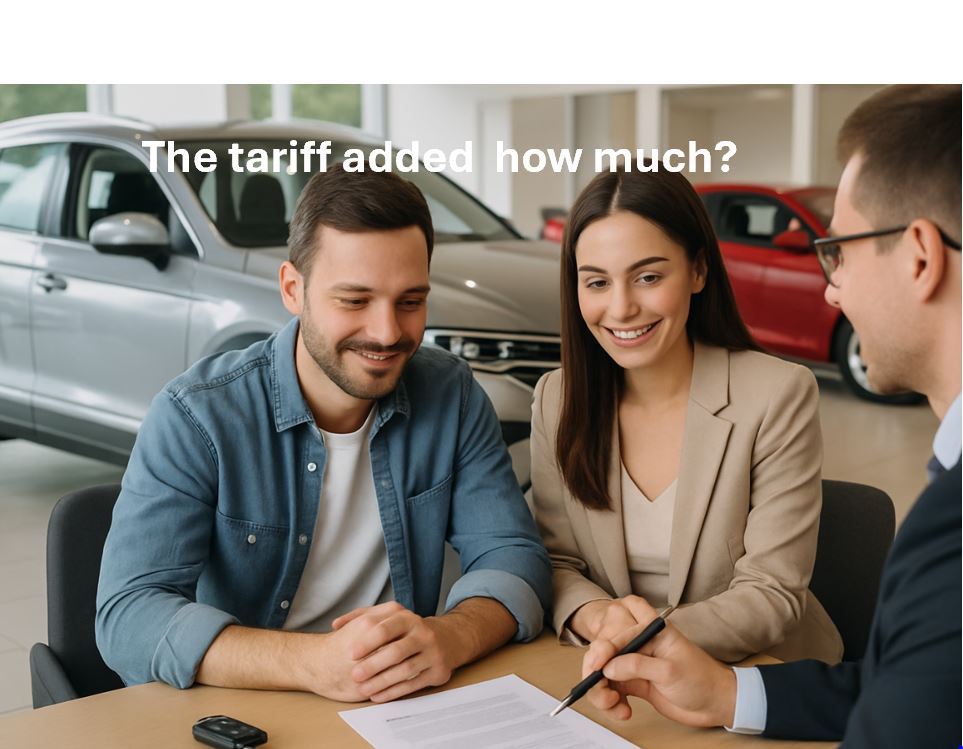
The Impact of Tariffs on the Price of Your Next Car or Truck
The impact of tariffs on new car and truck prices creates many challenges. Worst of all, it is one more way you can wind up overpaying. It is important you know that tariffs are only paid by manufacturers, dealers do not pay tariffs. You should ignore any addendum stickers listing tariffs as an additional cost. Any tariff costs added to a new vehicle will be paid by the manufacturer, who will then decide what portion of the tariff will be passed on to you by increasing the Manufacturer Suggested Retail Price (MSRP) Window Sticker’s Price. Period. Full stop.
President Trump’s 25% tariffs on all auto parts, parts assemblies, and cars and trucks imported from Mexico and Canada, means higher prices are on the way. This makes your largest and most complex purchase even more confusing. Imagine walking into a dealership and comparing two identically equipped new vehicles- same make, model, trim and equipment but with significantly different MSRPs. This is where dealers may try to raise the price of the lower priced, pre-tariff unit by adding an addendum sticker that includes a tariff cost. Why would a dealer try to add a tariff not paid to the price of a new vehicle? Dealers price people, not products. Don’t pay it. Choose the pre-tariff vehicle and negotiate from MSRP not the addendum sticker price.
In the meantime, it is a good time for consumers to buy. U.S. dealerships reported 2.69 million units at the start of April, a 10.5% decrease from a year ago. New vehicle inventory dropped by 4.7% to 2.49 million at the start of May as sales outpaced production, according to Cox Automotive data. The new vehicle days’ supply is based on the estimated pace of retail sales for the most recent 30-day period. The U.S. currently has a 66-day supply, down 16 days from last year and six days from last month. Current inventory levels are the lowest seen since 2023.
Falling inventory would normally be a great sign for most industries, as it indicates rising consumer demand is leading to increased product sales. In this case, the threat of tariffs raising new vehicle prices is pulling consumers into the market sooner than expected, driving up sales, prices, and dealer profits.
The average transaction price of a new vehicle is rising, by 2.5% in April to $48,699 month over month and 1.1% year over year. As demand rises, manufacturers are able to reduce incentive spend. Incentive costs are down to 6.7% of the average transaction price in April from 7% in March.
Car buyers are taking advantage of manufacturer incentives to buy now even while the automotive industry braces for some potentially lean times ahead. Be sure to read the fine print on new car incentives and remember the end dates are final. Some additional good news is trade-in values are rising as dealers search for more reasonably priced vehicles to offset more expensive new ones.
For consumers about to make what for most will be the largest, most complex, time consuming, confusing, risky and, sometimes just plain unfair financial transaction, it has never been more important to be well prepared. Why? Dealers are prepared to price you everyday. Learn more about how to properly prepare and take control of the purchase experience with a Car Buyer’s Gameplan. Plus, get the first step detailing your Financial Vital Signs, for free at www.thornebriar.com.
Copyright 2025 Thornebriar
